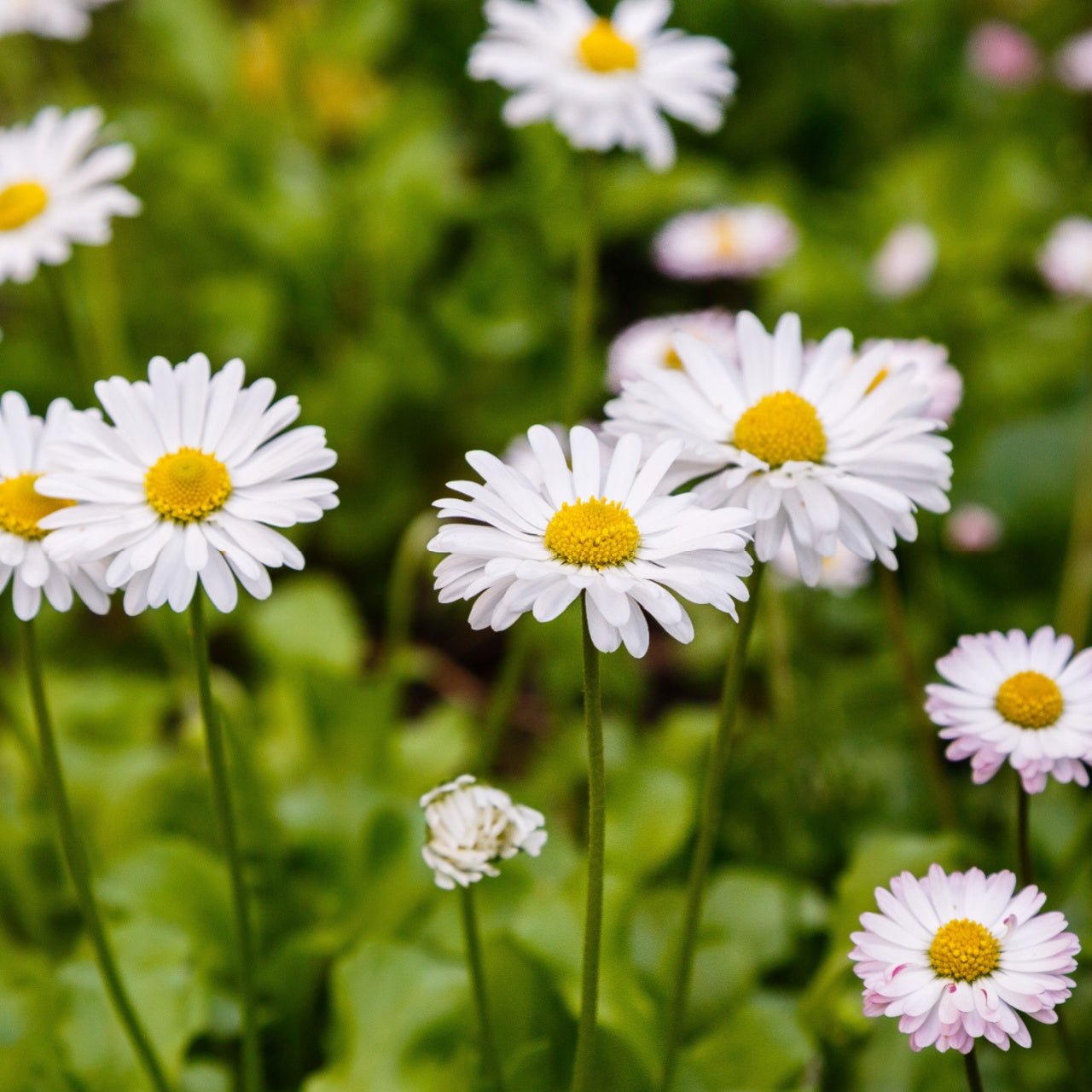

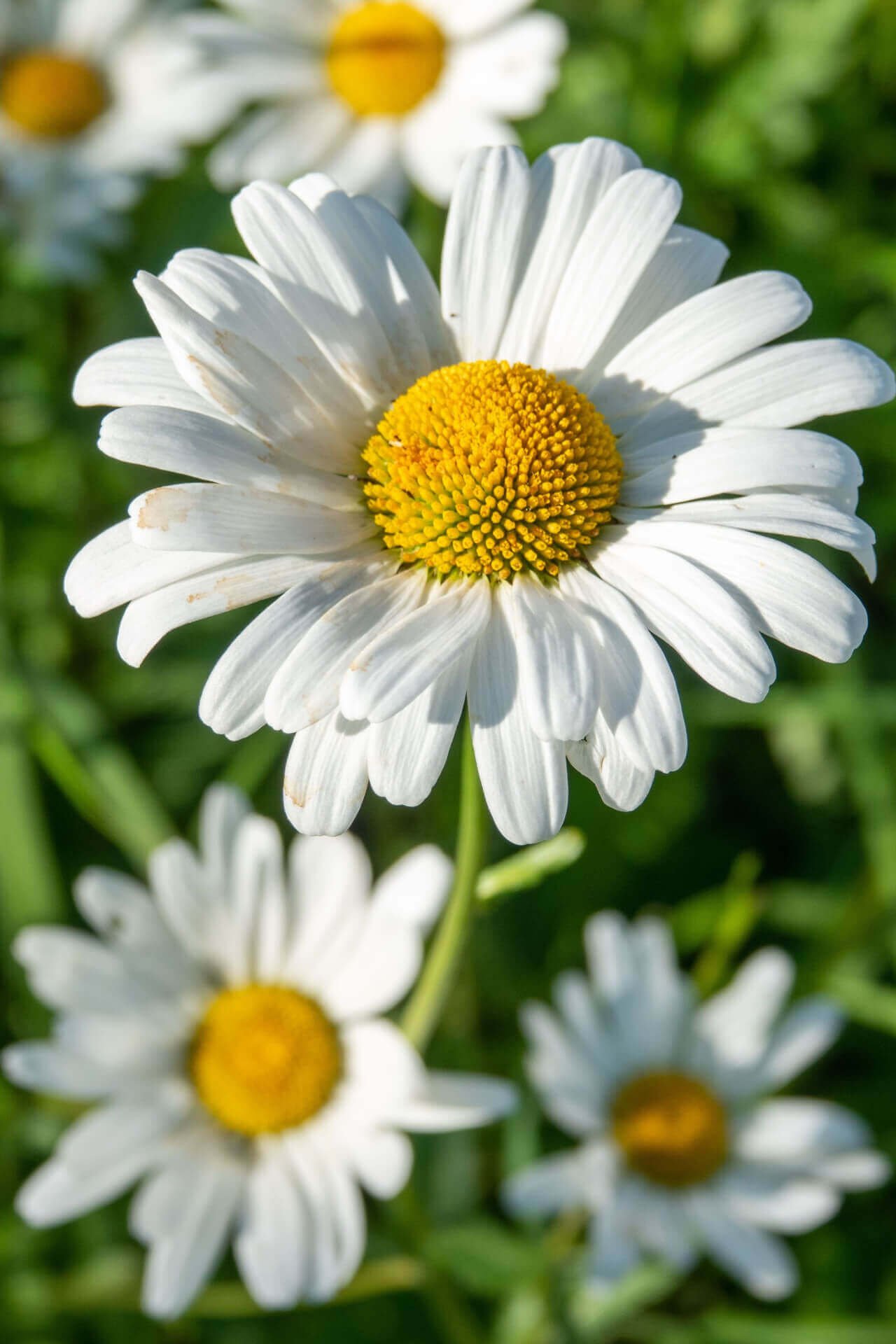

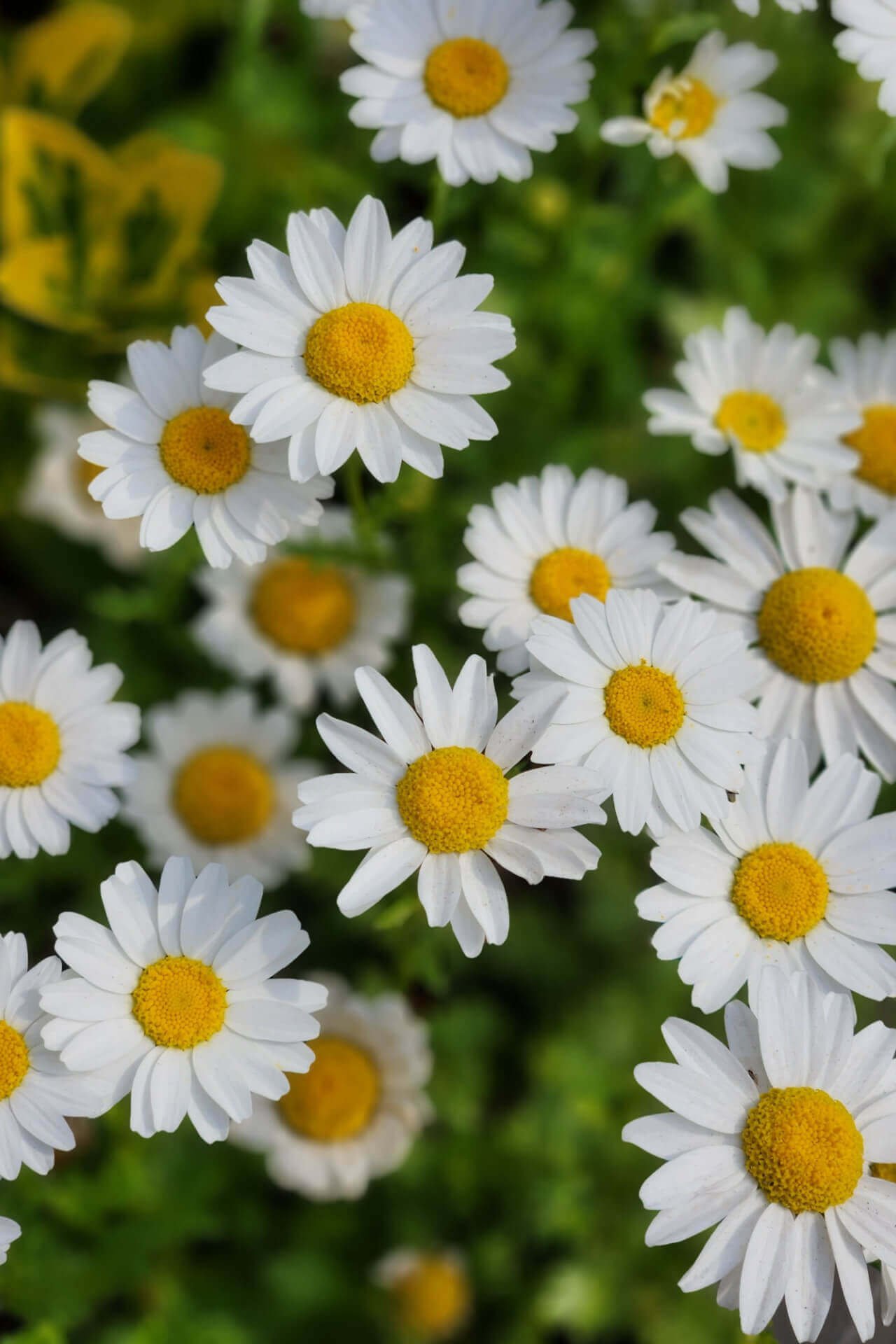
Oxeye Daisy
Easy to grow and maintain
Long-lasting blooms enhance garden color
Drought-tolerant, reducing water needs
Thrives in
ZONE 3ZONE 4ZONE 5ZONE 6ZONE 7ZONE 8ZONE 9This plant ships:
7-10 Days1 Year Guarantee on all plants
Oxeye Daisy - Leucanthemum vulgare
The Oxeye Daisy is a charming flower that thrives in many areas of the US. The recognizable white petals and yellow center can be found dotting the ground of meadows, open fields, scrub lands and open wood forests alike. The grassland wildflower can be found growing wild all across Europe and into Turkey and Georgia in the middle east. It gets its name from its flattened, yellow center that resembles the eye of an ox.
Plant Details - Oxeye Daisy
Family: Asteraceae
Light Requirement: Full Sun
Water Needs: Minimal
Height: 30 in
Spread: 2 ft
Growth Rate: Rapid
Soil Preference: Well drained
Bloom Time: May - September
Flower Color: White
Wildlife Value: Bees, Butterflies, Beetles
Notable Characteristics - Oxeye Daisy
This classic beauty is commonly confused with its sibling the Shasta Daisy, named for Mt. Shasta in California. The Shasta Daisy is a common cultivar, a hybrid developed from multiple daisy species, while the Oxeye Daisy is a plant native to Europe and the middle east. Its lush, leafy greens grow plentifully below its large flowers. The unopened flower buds can be harvested and prepared for eating, similarly to capers. The greens can also be eaten, and have a strong and unique flavor that is somewhat sweet – great for salads or as an herb-y topping for meat or grain dishes.
Landscape and Maintenance
The Oxeye Daisy is a lovely flower, but be ready to contain its aggressive growth. To prevent it from taking over your garden, try planting it in boxes or containers, or deadheading the flowers before they go to seed and spread. Its rapidly spreading root system can crowd out native plants and often invades lawns, landing it on the noxious weed list in Colorado and Wyoming and generally making it an invasive plant that is difficult to eradicate. Its long lasting blooms make for beautiful cut flowers to adorn your home.
This Is How Your Plants Will Look upon Delivery
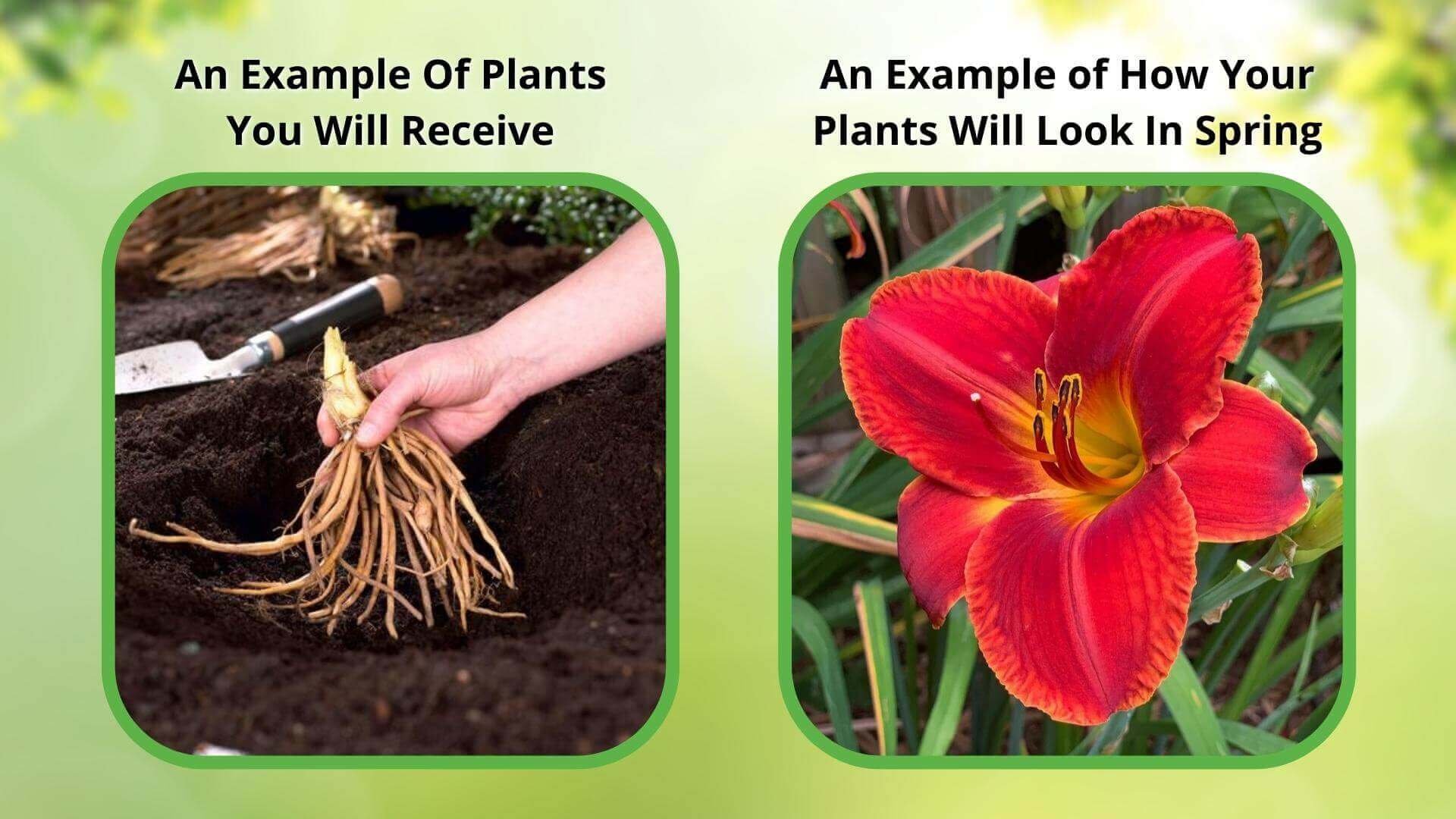
Bloom Season
Summer
Bloom/Foliage Color
White
Height at Maturity
Under 12"
Care
Oxeye Daisy thrives in well-drained soil and is drought-tolerant once established. Water regularly during dry spells and deadhead spent blooms to encourage continuous flowering. Cut back in late fall to maintain shape and prevent self-seeding.
Plant Reproduction
Oxeye Daisy can spread quickly by seed and vegetatively.
Shipping date depends on the date displayed and chosen when you order from the product's page.
We only accept returns on plants verified dead. If you think your plants have died, we offer a 1 year warranty, please use this File a Claim Link to verify dead plants and start with return warranty process.






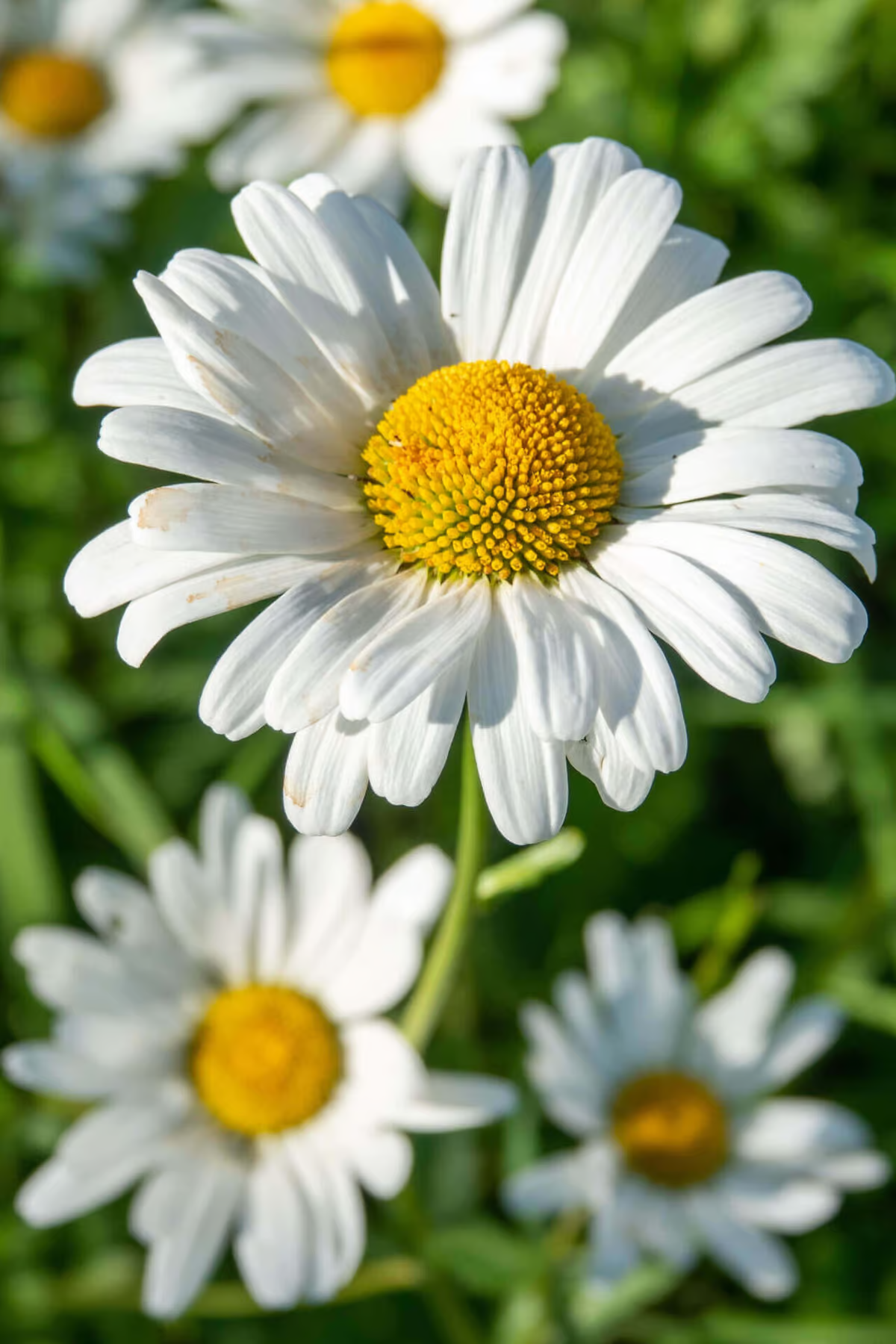
Bright Blooms:
Classic white petals with a sunny center add vibrant color to your garden.
Easy Care:
Low-maintenance and adaptable to various soil types.
Pollinator-Friendly:
Attracts bees and butterflies to your garden.
Versatile: Great for beds, borders, and wildflower gardens.
Caring Tips
How do I care for my Oxeye Daisy?
Each box contains detailed care instructions and information about your product. But here's the basics.
Care Tips
Oxeye Daisy thrives in well-drained soil and is drought-tolerant once established. Water regularly during dry spells and deadhead spent blooms to encourage continuous flowering. Cut back in late fall to maintain shape and prevent self-seeding.
Light Requirements
Oxeye Daisy (Leucanthemum vulgare) thrives in full sun, obtaining at least 6 hours of direct sunlight daily. While it can endure partial shade, full sun encourages the best growth and abundant blooming.
Hardy Planting Zones
3 • 4 • 5 • 6 • 7 • 8 • 9
Header
Use this content to share information about your store and products.
Frequently Asked Questions
How often should I water my plants?
How do I know if my plant is getting too much or too little sunlight?
What should I do to prepare my plants for winter?
What are the signs that my plant needs fertilizing?
How can I prevent pests from damaging my plants?
How do I choose the right plant for my climate zone?






